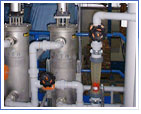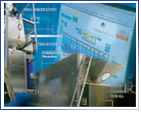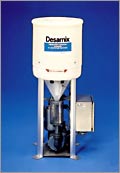|
Introduction |
|
Why be concerned? |
|
Supplier progress |
|
Potential impacts |
|
Functional groups |
|
Substance list |
|
Legislation / REACH |
|
FAQs |
|
Related Links |
|
Wash with care |



|
Environmental assessment of laundry detergents |
|
Supplier progress |
|
The key suppliers to the professional laundries do a great effort to continuously improve their supply and service. This includes reducing the environmental impacts of the laundry detergents, improving availability and transparency of documentation, improving delivery and handling of chemicals, improving the effects of detergents and creating management tools and training programmes.
It is important to realise that the impacts of the chemicals should not be seen as an isolated case, as the detergents to a great extent also determines the use of energy and water and influences the lifetime of the textiles. Below you will find a brief listing of initiatives taken by some of the key suppliers in Europe – Ecolab and Christeyns – over the recent 10-20 years. The highlighted links will take you to further information on the impacts of the substances in the ‘Functional groups’ section. Chemical nature of the substances · Introduction of per-oxy-acetic acid products to replace chlorine for bleaching · Substitution of NPEO / APEO in laundry detergents · Substitution of EDTA as complexing agent in the laundry detergents · Introduction of phosphate free alternatives for professional laundries · Launch of musk free perfume oils in detergents and softeners · Introduction of per-carbonate as an alternative bleaching agent in universal detergents replacing for example perborate (toxic and potentially mutagenic). Process / recipes: · Introduction of more efficient surfactants able to dissolve oil and fat at lower temperatures saving energy and making it possible to substitute dry cleaning · Introduction of low temperature energy saving washing processes with chemical disinfection Documentation · Introduction of ecological and toxicological certificates from independent agencies according to internationally accepted methods · Introduction of dermatological certificates with the major detergents and finishing products (human patch tests) Handling · Introduction of automatic powder dispensing systems with monitored detergent dosage for professional laundries · Introduction of reusable 200, 250, 600 and 700 kg big bags for use in professional laundries · Launch of the highly concentrated powder and paste detergents in order to decrease packaging and reduce the volume transported to laundries Laundry management · Introduction of data management system for monitoring and optimisation of detergent consumption in professional laundries · Establishment of standardised training programmes for laundries to assure correct product usage · Establishment of an European safety standard for the installation of dispensing equipment in laundries · Introduction of water and energy equipment to reduce the use of natural resources in professional laundries All of these improvements have great importance for continuous environmental improvement of professional laundries and this development will continue! |




|
Ecolab dosing unit |
|
Christeyns equipment |
|
The key suppliers already fulfils most of the EU Flower eco-labelling criteria.
For an assessment of the present situation versus the EU Flower eco-labelling criteria please refer to the page on Eco-labelling. |